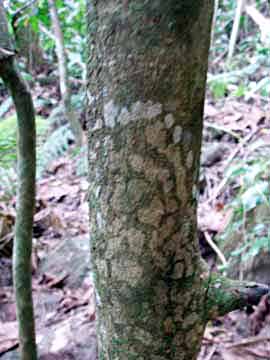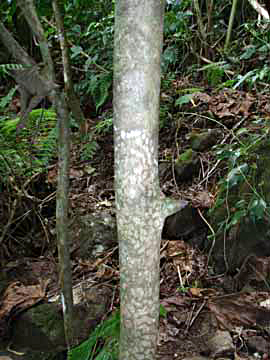Unidentified > Plant conditions > Superficial markings, tree, American Samoa
Unidentified Plant conditions Superficial markings, tree, American Samoa
|
Unident markings, American Samoa
|
|
|
 |

|
|
November 2005. Markings on a tree from American Samoa. The sender said: Something is laying down a half inch “unit”, then skipping over some unaffected bark to lay down another unit. In the close-up photo, it is possible to see that the units in the leading edge have a different silvery color, as if that’s the growing edge. It is not the feeding markets of a snail, no radular marks were seen; and no snails were noticed. Could it be a fungus?
A member said that he had seen the pattern before and wondered if it was the (nocturnal) grazing by some arthropod from the base of the tree and sits in one place and grazes the area around it and then goes back. Millipedes could be clients. But the microbial theory is also possible.
Another idea was that the patterns might be caused by slugs/snails climbing up the tree from the ground and grazing the algae growing on the bark. This would explain why the pattern is only at the bottom of the tree – indicating how high the slug/snail can climb in one night. Similar patterns can occur on algae-encrusted walls. Close examination of the pale patches may show patterns of abrasion on the bark
surface caused by the radula at work.
|
|
|
